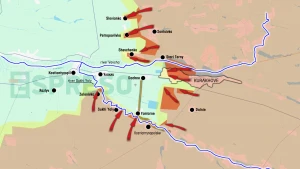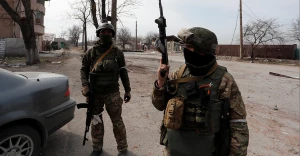Experts of the Kyiv Security Forum write about this.
- The goal of transferring the war to Russian territory, which has been detailed by the KSF, referencing statements from Ukrainian leaders. Western experts, influenced by "escalation-phobic" politicians, often narrow this goal to "eliminating the Russian sanctuary"—a rear area in Russia 300-500 kilometers from the Ukrainian border. Regular strikes in this area would help reduce the intensity of air and ground attacks on Ukrainian territory.
- Strengthening Ukraine's air defence: an independent but secondary goal that President Zelenskyy often mentions (citing, in particular, the figure of 7-25 additional Patriot batteries needed). In particular, the zone of guaranteed air defence (including against ballistic missiles), which currently exists only around Kyiv, should be expanded as much as possible; the air defence of the Ukrainian Armed Forces' forward positions should be improved; and SAMbush (a unique Ukrainian tactic of "air defence ambushes") should be used more widely.
- Isolation and neutralisation of Crimea as a Russian rear area. This strategic goal is often articulated by both Western experts (most often by US General Ben Hodges) and Ukrainian military leaders (such as Kyrylo Budanov). The airfields and bases in Crimea are vital for the whole war: from the frontline in Kherson and Zaporizhzhia to air and sea warfare. Ukraine has already successfully passed the halfway point to the isolation of Crimea: having driven the Russian fleet from the peninsula and regularly destroying Russian air defence there.
- A large-scale ground counter-offensive is sometimes mentioned, but mostly as a distant goal of Ukraine, unattainable today or ever.
The weapons currently being provided are necessary but not sufficient to achieve the above goals. First of all, it is necessary to lift the existing restrictions on the use of ATACMS and other Western-made missiles in Russia, which have already been mastered by the Ukrainian Armed Forces.
In addition, Ukraine's leaders and experts often mention several new types of weapons: both those already promised (but not yet delivered) and those whose delivery has not yet been publicly confirmed by Ukraine's partners.
- F-16 fighters and/or the less common Mirage 2000 (French-made) or Tornado (of the British-German origin) aircraft: a universal platform that will help in both defence and achieving all of the above goals. In particular, air strikes on Crimea are a logical next step after Russia's air defences on the peninsula have been sufficiently weakened (the Ukrainian Armed Forces have already used this tactic to liberate Zmiinyi Island).
- Radar aircrafts, commonly called AEW (airborne surveillance). Sweden has recently promised the Ukrainian Armed Forces two ASC 890s (also known as Saab 340 AEW&C/S 100B Argus), but the timing is unknown.
- Taurus KEPD 350 (German-Swedish) and JASSM (American) air-to-air cruise missiles: to be launched from Western or Soviet-made fighters. The maximum range of these weapons exceeds that of ATACMS.
- NATO's large cruise missiles, traditionally used as naval or anti-ship missiles, are now increasingly deployed in land-launched versions against land targets. Notably, the Cold War-era Tomahawk, including its new BGM-109C and Tomahawk MRC modifications, falls into this category. These missiles are comparable to Russia's Kalibr and Iskander-K. Ground-based Tomahawks can be more cost-effective and mass-produced than ATACMS, leading to their adoption by US ground units alongside both systems.
- Medium-range air-to-air missiles, primarily the US AIM-120 AMRAAM, the use of which will significantly expand the capabilities of Ukrainian fighters.
None of these weapons are state-of-the-art, particularly scarce, expensive or difficult to deploy, so their transfer is considered a priority in the long term.





